Beautiful Garden Design Ideas
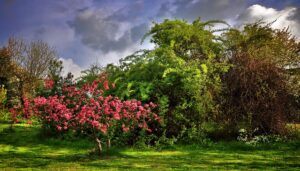 Mother Nature’s muse often strikes with her very own beautiful garden design ideas, but what if one wants to craft a paradise of their own design?
Mother Nature’s muse often strikes with her very own beautiful garden design ideas, but what if one wants to craft a paradise of their own design?
Many find the inspiration hard to come by without some pointers on how to go about creating their own garden design. These ideas and concepts will inspire the confidence to craft your own corner of Eden!

Whether you have an existing garden bed or are trying to fit in a new one, there might be a conundrum. What goes where? How do I make this look good? How do I know what looks good? Should I get supplies? Which ones? When? And so on and so on…
A list! A great place to start is by making a list! It just so happens I’ve got one. Here is a 4 point list on how to figure the answers to those questions as well as a whole section to provide you inspiration and get you going!
Table of Contents
Groundwork for Beautiful Garden Design Ideas
There are a few basic terms that help one to understand how to start thinking about those questions regarding what, where, and when that come up during the beginning of the process.
Texture and color
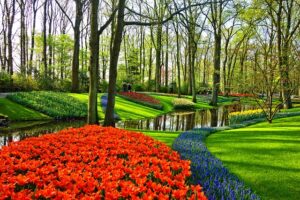 Solid sweeps of texture and color can serve as a backdrop or frame for a plant, ornament or location that is intended to be highlighted or the focus of attention in a garden. In the same way, alternating or varied sections of texture and/or color can bring the eye on an ever-changing adventure; going from colorful foliage to elegant blooms to light, airy fingers of grass and back down to rolling folds of ground cover. Knowing where to put what is essential to this.
Solid sweeps of texture and color can serve as a backdrop or frame for a plant, ornament or location that is intended to be highlighted or the focus of attention in a garden. In the same way, alternating or varied sections of texture and/or color can bring the eye on an ever-changing adventure; going from colorful foliage to elegant blooms to light, airy fingers of grass and back down to rolling folds of ground cover. Knowing where to put what is essential to this.
Flow, scale, and rhythm
 The Flow of your garden refers to how the eye naturally is drawn from section to section; where a certain type of plant or structure is in relation to the rest of the items within the frame of your garden space.
The Flow of your garden refers to how the eye naturally is drawn from section to section; where a certain type of plant or structure is in relation to the rest of the items within the frame of your garden space.
Scale refers to, as might be inferred, the sizing of the plants, structures and locations of the different elements in the garden space. It also refers to the size of the garden itself, and plays a role in the determination of what materials and maintenance will be required.
Rhythm refers to the overall “story” of your garden. A simplistic garden set up with little variety has a steady rhythm, compared to a variety heavy space with lots of “story” might have a rhythm that rises and falls with lower points used to emphasize the grander crescendos of particular areas.
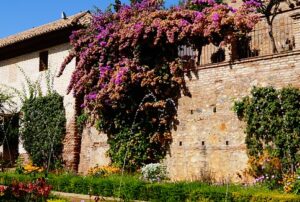
These three elements work with each other and can often be difficult to conceptualize, so I’ll include a little visualization to help.
Symmetry and Balance
Have you ever been to a park that has a garden? Imagine walking in a park along a lovely row of well maintained six-foot-high shrubs with a beautiful border of two-foot-tall ornamental grass along the ground in front of the bushes with a nice, canopy providing tree behind the bushes, spaced every thirty feet.

Suddenly, instead of the tree, bushes, and grass, there is a five-foot patch of flowers with a ground cover of ivy, followed by more of the same tree/shrubbery/grass combination as before. The patch of flowers and ivy could seem to have been misplaced or even done in error. “That doesn’t go there.” you might say. It is way shorter than the forty-foot tree, wall of bushes that are maintained at a nice six-foot height, and knee-high ornamental grass. Well, you would be absolutely right.
With the exception of a specific location of some type of garden ornament or honorary spot, the random patch of flowers interrupts the even, flowing pace of the existing walkway landscaping. The scale texture and color of the plants are completely off with the flowers being so much smaller and more delicate. The rhythm of a tree every thirty feet has been interrupted by a sixty-foot gap.
 This interruption can, and often is, done on purpose for the highlighting of a statue, bench or some other specific element of the garden that is made more significant by its difference from the surrounding design. This is a very large scale example of how flow, scale, and rhythm work together to provide a seamless “story” told by the garden itself.
This interruption can, and often is, done on purpose for the highlighting of a statue, bench or some other specific element of the garden that is made more significant by its difference from the surrounding design. This is a very large scale example of how flow, scale, and rhythm work together to provide a seamless “story” told by the garden itself.
Story
Symmetry and balance also play a key role in the “story” of the garden. There is not usually a symmetry found in nature when it occurs in the wild, but we humans tend to find it pleasing to the eye.
You will often see gardens set up with at least one section or plant that is either constructed, pruned or trained to be symmetrical. This can be simply a plant growing in the center of a round pot, or an entire garden bed designed to be a mirror image of itself at the half-way point.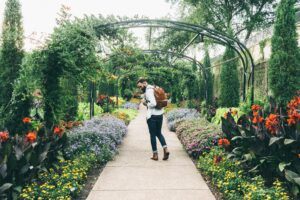
Balance, on the other hand, is a rule of nature. On a global scale, there is always a balance. Where an imbalance occurs, it is a law of nature that balance will inevitably reassert itself over time.
With a small garden in a planter inside next to a window or sprawling estates tended over generations, balance keeps the garden thriving. Both in design as well as in garden health (the state of the soil, plants, and setting), making sure there’s not too much of one thing or too little of another keeps the garden in tip-top shape.
Other Considerations
Sun and shade
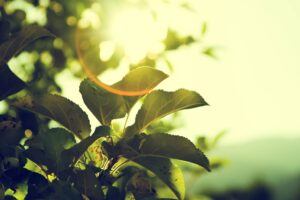 Where you want to place a garden will be largely determined on the amount of natural or artificial light you have available, and which plants you want to use. If the location is the higher priority, you’ll have to decide on which plants will work well within the light availability you have. If the type of plants you desire is the higher priority, you will have to either find a place that will meet those needs or create the light or shade needed for that variety of plants.
Where you want to place a garden will be largely determined on the amount of natural or artificial light you have available, and which plants you want to use. If the location is the higher priority, you’ll have to decide on which plants will work well within the light availability you have. If the type of plants you desire is the higher priority, you will have to either find a place that will meet those needs or create the light or shade needed for that variety of plants.
Existing structures
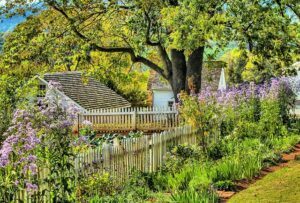 Are there walls, fences, windows, overhangs, balconies, staircases, hills, or other physical obstructions or installations that you want to use? Or will you have to work around? Things like windbreaks, light obstruction, and available dimensions have to be taken into consideration is important because these things will affect what you are actually able to do with space. It’s essential to the future health and sustainability of your garden to know how these things work within your desired garden design.
Are there walls, fences, windows, overhangs, balconies, staircases, hills, or other physical obstructions or installations that you want to use? Or will you have to work around? Things like windbreaks, light obstruction, and available dimensions have to be taken into consideration is important because these things will affect what you are actually able to do with space. It’s essential to the future health and sustainability of your garden to know how these things work within your desired garden design.
Regional and seasonal
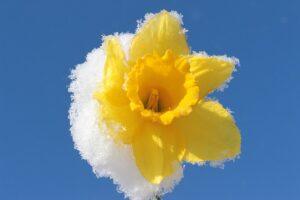 The setup and details of your garden will also be greatly effected by the region in which you live. Erosion, freezes, ground stability, and existing terrain all vary from place to place. Not only does your whereabouts in the world determine a lot when it comes to garden design, but also the seasonal changes need to be taken into consideration. The seasons can also be vastly different in a relatively short distance.
The setup and details of your garden will also be greatly effected by the region in which you live. Erosion, freezes, ground stability, and existing terrain all vary from place to place. Not only does your whereabouts in the world determine a lot when it comes to garden design, but also the seasonal changes need to be taken into consideration. The seasons can also be vastly different in a relatively short distance.
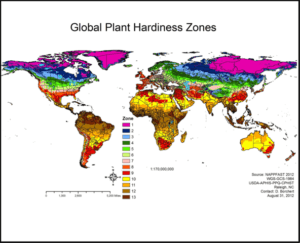 Knowing your hardiness zone will help you know the approximate time frame for seasonal changes like freezes or thaws and droughts or floods. These zone designations will also help you to determine what type of plants will survive and/or thrive in which locations. (This is not as necessary to research when considering an indoor garden, but it definitely helps.)
Knowing your hardiness zone will help you know the approximate time frame for seasonal changes like freezes or thaws and droughts or floods. These zone designations will also help you to determine what type of plants will survive and/or thrive in which locations. (This is not as necessary to research when considering an indoor garden, but it definitely helps.)
There is a good section all about hardiness zones and the considerations you have to take in this article we put out about starting your very own fairy garden. (The section labeled “Indooor or Outdoor”) This will determine the type of plants, or your schedule of maintenance, depending on which is the higher priority for you.
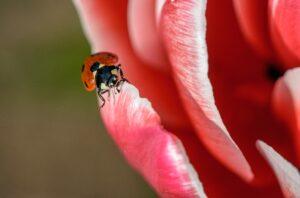
Wildlife
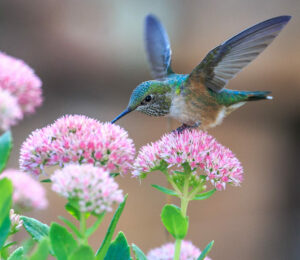 A healthy garden has a good balance of wildlife. Some might not want a great deal, or any wildlife to deal with. While others prefer it to be the main component of their personal paradise. Personally, I want to encourage garden-friendly wildlife, while maintaining a close control on the prevention of, what I would consider, garden pests. Make sure this is taken into consideration and that looking into local wildlife and pest prevention is weighed appropriately.
A healthy garden has a good balance of wildlife. Some might not want a great deal, or any wildlife to deal with. While others prefer it to be the main component of their personal paradise. Personally, I want to encourage garden-friendly wildlife, while maintaining a close control on the prevention of, what I would consider, garden pests. Make sure this is taken into consideration and that looking into local wildlife and pest prevention is weighed appropriately.
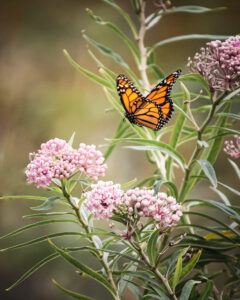 There are even specific plants that attract different types of wildlife. For example, milkweed is the monarch butterfly’s preferred food. If you are creating a butterfly garden, having a section of milkweed will most likely attract some Monarchs (As long as the location is along the monarch’s migration route and it’s during the right time of year.) This is where a little bit of research comes in handy so a lot of effort is not done in vain.
There are even specific plants that attract different types of wildlife. For example, milkweed is the monarch butterfly’s preferred food. If you are creating a butterfly garden, having a section of milkweed will most likely attract some Monarchs (As long as the location is along the monarch’s migration route and it’s during the right time of year.) This is where a little bit of research comes in handy so a lot of effort is not done in vain.
There are also plants that repel different types of wildlife. For example, daffodils are toxic to deer, and are, therefore, a useful and beautiful way to keep deer away. Lavender is not only fragrant and beautiful, but is also useful due to its ability to repel moths, scorpions, fleas, and flies- including mosquitoes!
Feature these Features
Lawn
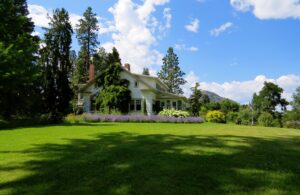 Don’t underestimate the impact of a lush, green lawn. Having a simple garden design complimented by and prominently displayed by a well-maintained lawn can create a manageable space that can appear more ornate than it’s maintenance might suggest. “The grass is always greener…” is a cliche that can be directly linked to the importance or desirability of a well-maintained lawn.
Don’t underestimate the impact of a lush, green lawn. Having a simple garden design complimented by and prominently displayed by a well-maintained lawn can create a manageable space that can appear more ornate than it’s maintenance might suggest. “The grass is always greener…” is a cliche that can be directly linked to the importance or desirability of a well-maintained lawn.
There are many differing opinions on what a good lawn looks like, even differing opinions on what a good lawn is made of! Different types of grass are good for a variety of different purposes.

One might want to use a drought-resistant variety if living in a drier climate, and a different type of grass for the kids to run around and play on that won’t mind the recurrent traffic. There are even lawns that don’t use grass at all! A lawn made of clover needs little- if any- mowing, and so if often a favorite of those who like the look of a soft, green lawn with little maintenance requirements.
Borders and Boundaries
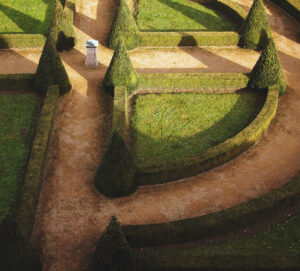
Having clean lines can do wonders for presenting a finished look even when in-between seasons or during a garden bed overhaul. Putting in a creative or decorative border has the ability to bring together or separate sections of the space that will help with the flow and rhythm. Borders like fences or raised garden beds are also helpful with potential wildlife issues, desired sun, and shade plans, as well as adding a pop of creative design.
Borders can even be made from plants themselves. Ornamental borders are frequently seen outside large sub-divisions or at the entrance/exit of a place of business. Often times shrubs are used to border property as well. Plants are often functional as well as ornamental.
Promote a Purpose
 Every garden has a purpose. It can be as simple as being a pretty spot out the window to look at, or as complex as a decorative outdoor event location that will host hundreds, if not thousands of guests. Whichever direction the garden design goes, it will serve the purpose intended for it.
Every garden has a purpose. It can be as simple as being a pretty spot out the window to look at, or as complex as a decorative outdoor event location that will host hundreds, if not thousands of guests. Whichever direction the garden design goes, it will serve the purpose intended for it.
Vegetable Gardens
There are vegetable gardens that need to be tended regularly and harvested appropriately which can be a supplement to the dinner table. Within this category, I include herb gardens and any other “active gardens” that will see regular maintenance on a more meticulous level than your average garden for beautification purposes of varying scales.
Community Gardens
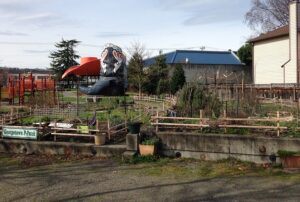 There are community gardens that are increasing in popularity everywhere. These can be anything from the aforementioned vegetable /herb/ etc gardens to gorgeous flower gardens to simple learning gardens that may not be well-tended, but serve to incorporate the general concept of nature and agriculture into the young minds of today.
There are community gardens that are increasing in popularity everywhere. These can be anything from the aforementioned vegetable /herb/ etc gardens to gorgeous flower gardens to simple learning gardens that may not be well-tended, but serve to incorporate the general concept of nature and agriculture into the young minds of today.
Learning Gardens
Learning gardens may not be the prettiest, but they serve one of the most important purposes of any other kind of garden. These types of gardens teach the youths of today the basics of nature and, more importantly, the essential concepts of how we exist in this world.
There are more extensive and prolific farms or garden arenas, however the importance of the ones that are dedicated to teaching our young about the essentials of how and why things grow, and why they should care, cannot be overstated in their importance to the future of our world.

There are gardens that encourage play and gatherings by providing a large open space that is well cultivated and intended for a large amount of traffic. Think of the lawns intended for music concert attendees, festivals, and outdoor carnivals or conventions. These may not initially be considered gardens, but simply asking a groundskeeper or owner of a plot of land intended for a festival will reveal the headache and potential financial disaster a lawn left to go to mud will present to the patrons of such an event. People pay good money for a nicely maintained space they can utilize to their needs.
A Welcome Escape
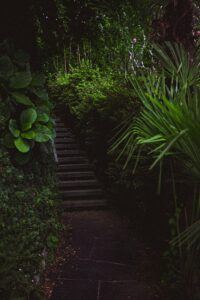 There are spaces also looked on as retreats. A place people go to in order to get away from the hubbub of the day to day. These places can be in your neighbor’s backyard, at a local government-funded botanical garden or arboretum, or at a more scenic retreat in the outskirts of a city. (Some spas and rehabilitation facilities are well known for maintaining a serene garden space for patrons to enjoy a reprieve from modern society.)
There are spaces also looked on as retreats. A place people go to in order to get away from the hubbub of the day to day. These places can be in your neighbor’s backyard, at a local government-funded botanical garden or arboretum, or at a more scenic retreat in the outskirts of a city. (Some spas and rehabilitation facilities are well known for maintaining a serene garden space for patrons to enjoy a reprieve from modern society.)
There does not need to be a large scale, or sprawling landscape for a retreat to be created. The simple backyard plot or patio corner can be as serene and revitalizing to the owner/ user as the most elaborate escape cultivated by generations of groundskeepers.
For some, it is the pay off of getting their hands in the dirt and working the land. For others, it is the peace and connection they get from basking in the magnificence of nature’s glory on display. Either way, the design of the garden itself is essential to the feel of the space.
Entertainment
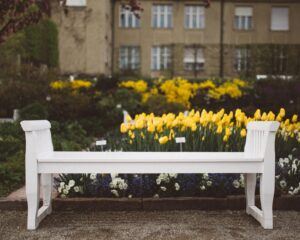 With any garden design there are multiple facets to consider. One of the most important, yet often overlooked components is lighting and seating. Whatever the purpose of the garden, there will rarely be an instance where lighting or seating is not essential to the daily function of the space.
With any garden design there are multiple facets to consider. One of the most important, yet often overlooked components is lighting and seating. Whatever the purpose of the garden, there will rarely be an instance where lighting or seating is not essential to the daily function of the space.
The majority of gardens are not idle patches of cultivated plants set and left to the groundskeeper to enjoy during their rounds. With the exception of farms used to feed the peoples of the world, land used for entertaining often requires the consideration of those that will enjoy the pleasing views it provides.

Depending on the scale of the particular patch of plants, seating can be either a permanent fixture of the design; considered and allowed for in the initial design, or accounted for in the available space left without encumbrance to the slated patron utilizing the space. On these larger-scale developments, lighting becomes more of an issue brought up by those using it, but inherently considered by those of the smaller scale by the nature of the intimacy of personal garden design.
With personal gardens, the issue of lighting is rarely a significant problem due to the fact that most homes come with standard outdoor lighting either from the home itself or streetlamps. There are many options for garden lighting including the favored tiki torches, lamp posts, and even the relatively common outdoor porch light.
The need for outdoor lighting is only necessary if the natural light is either not available due to the time of day, or a pre-planned event is scheduled and will be occurring within a structure of some kind that prevents the natural daylight from providing adequate lighting.
The Latest Thing in Laying Green
Trends
With today’s society becoming ever-more digital and less reliant on the expertise of those who have dedicated their lives to a particular craft, DIY (Do- It- Yourself) has become a movement in and of itself. With YouTube videos and Pinterest dominating the digital landscape, people are able to accomplish the more basic garden projects without paying the professional landscaper.
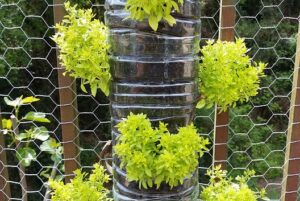
The importance of the 3 R”s in our culture has not been diminished by the recent climate change debate. In fact, the effect of the commonly known “Reduce, Re-use, Recycle” campaign can be argued to be of more relevance now than it was before the turn of the century. More people than ever are looking to save money and help their environment by taking the things they would normally have thrown away, and using them instead to beautify their local area. People nowadays are looking for what will work for them for the least amount of effort and cost to both themselves and the environment.
The ease of use and ease of effect on the planet has become a major selling point to both products and practices throughout the world. In every industry, people are coming across brilliant and innovative ways to improve their place and improve their world. This is not only notable in the gardening world, but in the world at large.
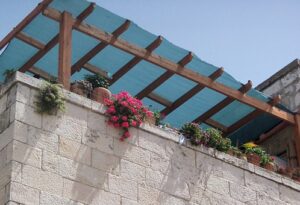 With more and more people living in cities, small scale gardening is becoming more of a necessity and less of an extravagance in the urban world. You see this with community gardens becoming more prevalent, rooftop and structure-spanning greenery being incorporated into modern architecture. The needs of the city-dwelling citizen to have more access to nature is being acknowledged and accounted for en mass.
With more and more people living in cities, small scale gardening is becoming more of a necessity and less of an extravagance in the urban world. You see this with community gardens becoming more prevalent, rooftop and structure-spanning greenery being incorporated into modern architecture. The needs of the city-dwelling citizen to have more access to nature is being acknowledged and accounted for en mass.
Along with the smaller and more accessible garden design, portability is another thing to consider. Many want to move their paradise from one location to another.
More people are renting instead of buying, which limits an individual’s desire to invest in the time, effort, and money into an in-ground garden.
Themes
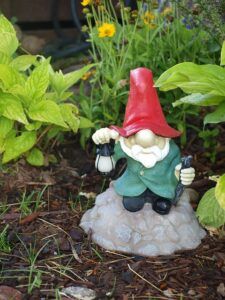 With the rise of portable gardens comes another eccentricity, Themed gardens. There are a multitude of shops and companies providing small garden ornamentation that follow a particular theme or idea. Fairy gardens are a wonderful example of these! Smaller, portable gardens with a more themed concept are becoming more and more popular.
With the rise of portable gardens comes another eccentricity, Themed gardens. There are a multitude of shops and companies providing small garden ornamentation that follow a particular theme or idea. Fairy gardens are a wonderful example of these! Smaller, portable gardens with a more themed concept are becoming more and more popular.
Themed gardens are by no means relegated to the small, portable planter options. Large or small, themes can be a fun and interesting way to bring personality to your space. Here’s a small list of different themes to inspire the garden design ideas for you!
Edible gardens ⁓ Butterfly gardens ⁓ Drought gardens ⁓ Wildlife gardens ⁓ Evening/ moon gardens ⁓ Healing gardens ⁓ Scent/ perfume gardens ⁓ Zen gardens ⁓ Cultural gardens ⁓ Wildflower gardens ⁓ Sports gardens ⁓ Antique gardens ⁓ Inside/outside gardens ⁓ Tea gardens ⁓ Herb gardens ⁓ Salsa gardens
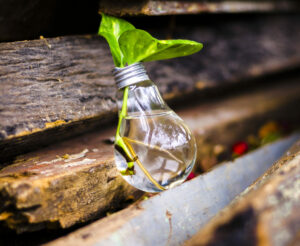 There are many many more! My favorite theme is re-purposed items! I just look around at unused or neglected items that I already have, then incorporate them into my garden space. Your very own theme will come together faster than you think. Putting that personal touch on your space will make it look and feel just right!
There are many many more! My favorite theme is re-purposed items! I just look around at unused or neglected items that I already have, then incorporate them into my garden space. Your very own theme will come together faster than you think. Putting that personal touch on your space will make it look and feel just right!
Now That You Have These Beautiful Garden Design Ideas, Go Forth and Grow!
I’m so glad I got the opportunity to share these with you. I hope you use these basic concepts and development framework for designing your very own garden! Sometimes all you need is a little inspiration and some good information to point you in the right direction. Now let your creativity take the wheel!
Please share with us some pictures of your space and your very own garden design ideas! If you have read this far and are still looking for more gardening tips, we have more here!
Gratefully,
Randi
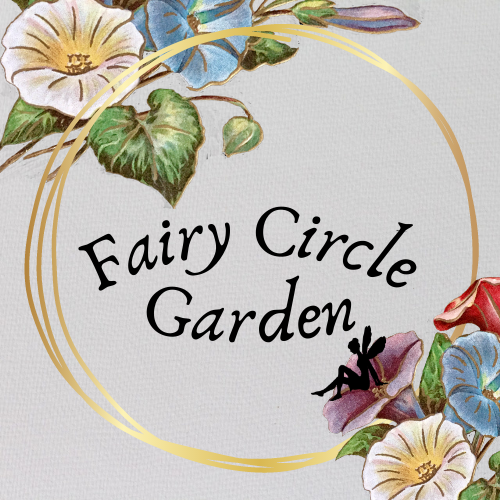
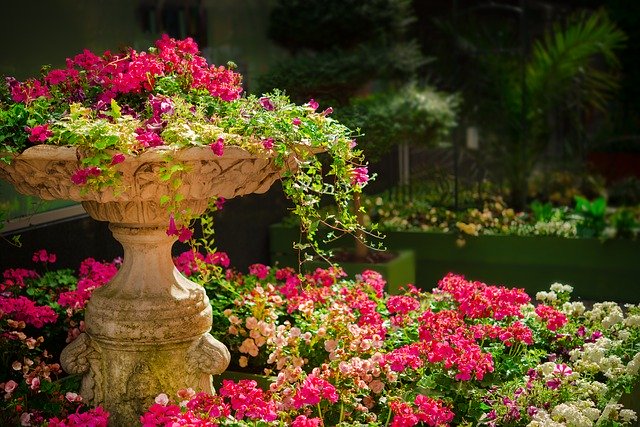
I just live for gardening year-round, and since I live in a cold winter climate I am into growing houseplants as well as my outdoor gardening beds. This has been a great gardening guide for anyone interested in getting into gardening or learning more about how to create an awesome garden.
Thank you
Jeff
You have no idea how much that means to me! Thank you very much! I would love to see what kind of gardens you have both indoor and out! Please feel free to share, and thank you again for your kind words.
The only thing more beautiful than a well-kept garden is the natural scenery of forests and lakes of mother nature. I’m fortunate enough to have a small garden. It’s nothing fancy but we have perennial flower beds, different kinds of bushes, including berries like black currants, we also have small beds for strawberries and herbs. Even though we live almost in the middle of a small city we get to harvest berries, herbs, and apples in the autumn from our own garden. I think many people in cities have lost contact with nature completely, gardens and parks are essential for your well being. We are meant to enjoy nature in all its glory!
I agree completely! I feel like there are still those, like yourself, that are in the city for whatever reason, and still, feel the need to connect with nature in some way. I absolutely love that you found a way to bring that little bit of Nature into your lives! ?
Please feel free to share your garden with us!
Thank you!
Great ideas you shared here. My friend has been gardening and she has been looking for ways to make here garden look good so I think this comprehensive guide will help her.
I think the idea of portable garden is what will intrigue her more
I am glad you think she would get a lot from this article. I have moved a couple of times in the last decade, and the occasional plants I had put in the ground had to be left behind. Sometimes it’s unavoidable, but if you move a bit, container gardens are your best friend! I’d love to hear her thoughts on the article as well.
Thank you!
I really like your advice – it’s an excellent idea to have a list. It definitely helps with the design ideas that you have on mind. Thanks for the useful resource.
I’ve found the little notebook I started keeping with my garden supplies has ended up getting filled with lists and ideas for potential projects in the garden. I used to get so frustrated when I would be out working in the garden and would have a wonderful idea, but when I finally got inside, washed up, and around my pen and paper, that wonderful inspiration had flitted away with the lovely spring breeze. I am glad you enjoyed the article!
Hi Randi, thank you for this information. I am a gardener and found your post very helpful and informative resource.
I definitely got a few new ideas out of this post and will be putting them to use when working on my gardens this season.
Cheers
Jo
Thank you very much for the compliment. I want to make sure that when you spend your time here at Fairy Circle Garden, that you come away with more knowledge than you had before. I would love to see what you’re working on!
Thank you!
Wow! I love that list of garden design themes. I would never in a million years have thought about some of them. I wonder what a drought garden or a sports garden would be like. Seems like the options are endless!
The options are endless! A drought garden has more to do with the type of plants in the garden. Different cacti, shrubs and even some flowers and vines can thrive in drought conditions. A sports garden would have decor items like a deflated volleyball used as a pot, a basketball goal as a hanging planter or a small soccer goal as a trellis.